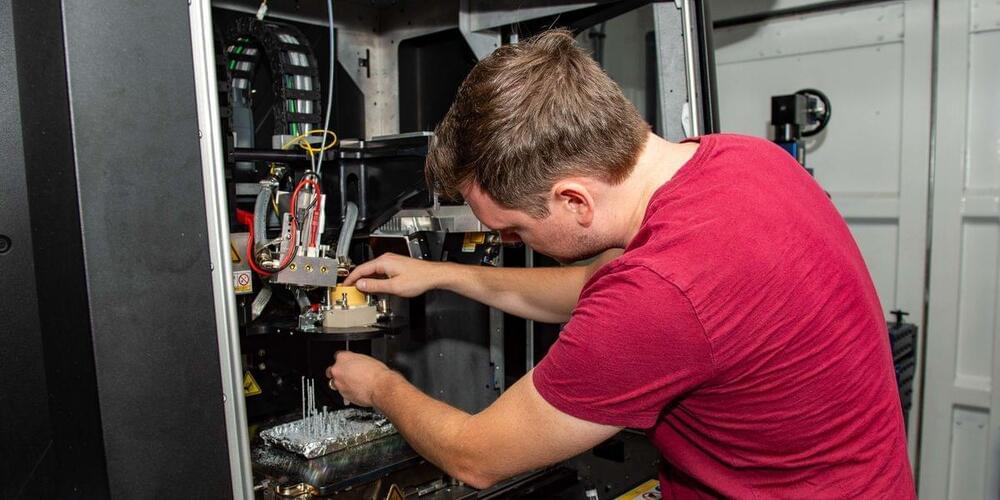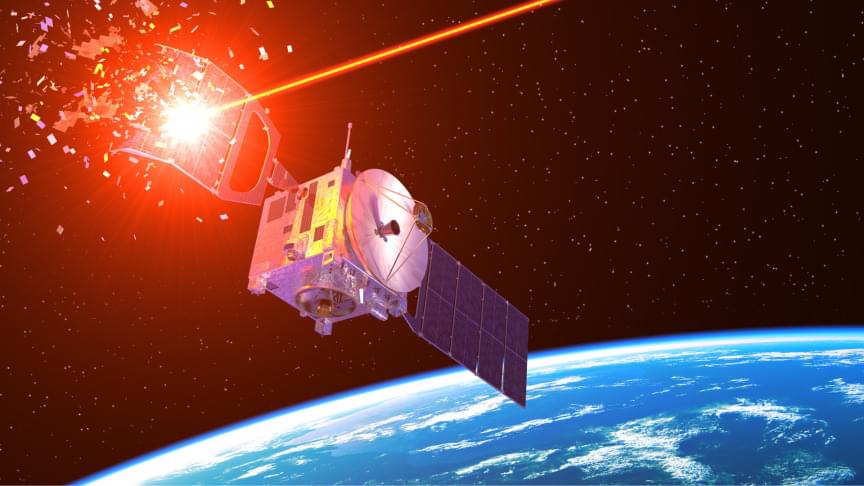Category: military – Page 79
Wind farm developers have found unexploded munitions at two sites set to be some of the first commercial offshore wind farms in the US. After decades of military dumping, weapons on the seabed aren’t uncommon, but the developers will have to work around them.
Circa 2014
After decades of experiments, U.S. Navy scientists believe they may have solved one of the world’s great challenges: how to turn seawater into fuel.
The development of a liquid hydrocarbon fuel could one day relieve the military’s dependence on oil-based fuels and is being heralded as a “game changer” because it could allow military ships to develop their own fuel and stay operational 100 percent of the time, rather than having to refuel at sea.
The new fuel is initially expected to cost around $3 to $6 per gallon, according to the U.S. Naval Research Laboratory, which has already flown a model aircraft on it.
Vulnerability researchers have found security issues in a GPS tracker that is advertised as being present in about 1.5 million vehicles in 169 countries.
A total of six vulnerabilities affect the MiCODUS MV720 device, which is present in vehicles used by several Fortune 50 firms, governments in Europe, states in the U.S., a military agency in South America, and a nuclear plant operator.
The risks stemming from the findings are significant and impact both privacy and security. A hacker compromising an MV720 device could use it for tracking or even immobilizing the vehicle carrying it, or to collect information about the routes, and manipulate data.
Military dogs will don augmented reality goggles to test their ability to keep soldiers safe by allowing them to direct the dogs from afar.
Lockheed Martin has been busy this year. In April of 2022, the Defense Advanced Research Projects Agency (DARPA) and its U.S. Air Force partner announced that they had completed a free flight test of the Lockheed Martin version of the Hypersonic Air-breathing Weapon Concept (HAWC).
Then just last month, the U.S. Department of Defense (DoD) awarded the company a contract to construct the nation’s first megawatt-scale long-duration energy storage system. Under the direction of the U.S. Army Engineer Research and Development Center’s (ERDC) Construction Engineering Research Laboratory (CERL), the new system, called “GridStar Flow,” will be set up at Fort Carson, Colorado.
In the same time frame, General Motors and the firm announced their plans to produce a series of electric moon rovers for future commercial space missions. The companies said they plan aim to test the batteries developed by GM, in space later this year. They also set the ambitious goal of testing a prototype vehicle on the moon by 2025.
The amphibious assault ship USS Essex can print parts on demand, reducing the need for inventory.
One of the U.S. Navy’s largest warships is now rocking a 3D printer, allowing the crew to quickly crank out replacement parts for drones. The service hopes that additive manufacturing technology will allow it to save time and money, reducing the need to stock spare parts on hand, especially when a ship is at sea. It believes that 3D printers could someday become standard issue on every warship.
While it may seem a bit silly to think about an asteroid hitting the planet in 2052, the 2021 QM1 hitting Earth would be devastating. The asteroid is said to be 50 meters or 150 feet in diameter. Should it impact, it would have a force of six tons of TNT. To put that in perspective, it would be 400 times more powerful than the atomic bombs that had been dropped on Hiroshima. That would certainly be enough to destroy a large city and much more. There had been a 12-megaton asteroid that hit Earth over a remote part of the Siberia region. The impact flattened over 830 miles of forest, and three people were said to have died because of the impact. However, if that impact happened anywhere that was populated, that entire city, town, or state would essentially have been wiped off the map.
The 2021 QM1 had initially been discovered in August of 2021 at the Mount Lemmon observatory. It was discovered along with a dozen other asteroids. However, during Asteroid Day 2022 which took place in June of 2022, the ESA (European Space Agency) deemed that the 2021 QM1 asteroid would be completely safe and not strike the earth. Another asteroid by the name 2022, AE1, was also said to be on a collision course with the planet before it was recently deemed safe as well. The 70-meter asteroid is said to strike the moon before it would hit our planet. That might not seem like good news, considering the moon being destroyed might cause significant other damage to the planet, but it’s still good news.
Thankfully, there are scientists and astronomers that revolve their lives around studying the trajectory of rogue asteroids. They are meant to alert the planet should we be in any imminent danger. However, would the public go a bit crazy if they knew a giant asteroid was catapulting straight to Earth? Hopefully, they would not. Mass hysteria is always something to think about when there is a credible threat that cannot be vanquished by our modern technology.
Will it succeed?An open-source investigation suggests that Russia is building a giant laser-based anti-satellite weapon near Zelenchukskaya in the southwest part of the country, Space.com reported. This will allow it a soft-kill option to take down adversarial satellites.
Instead of temporarily blurring sensors, Russia is going full throttle, looking to destroy optical sensors on satellites.








